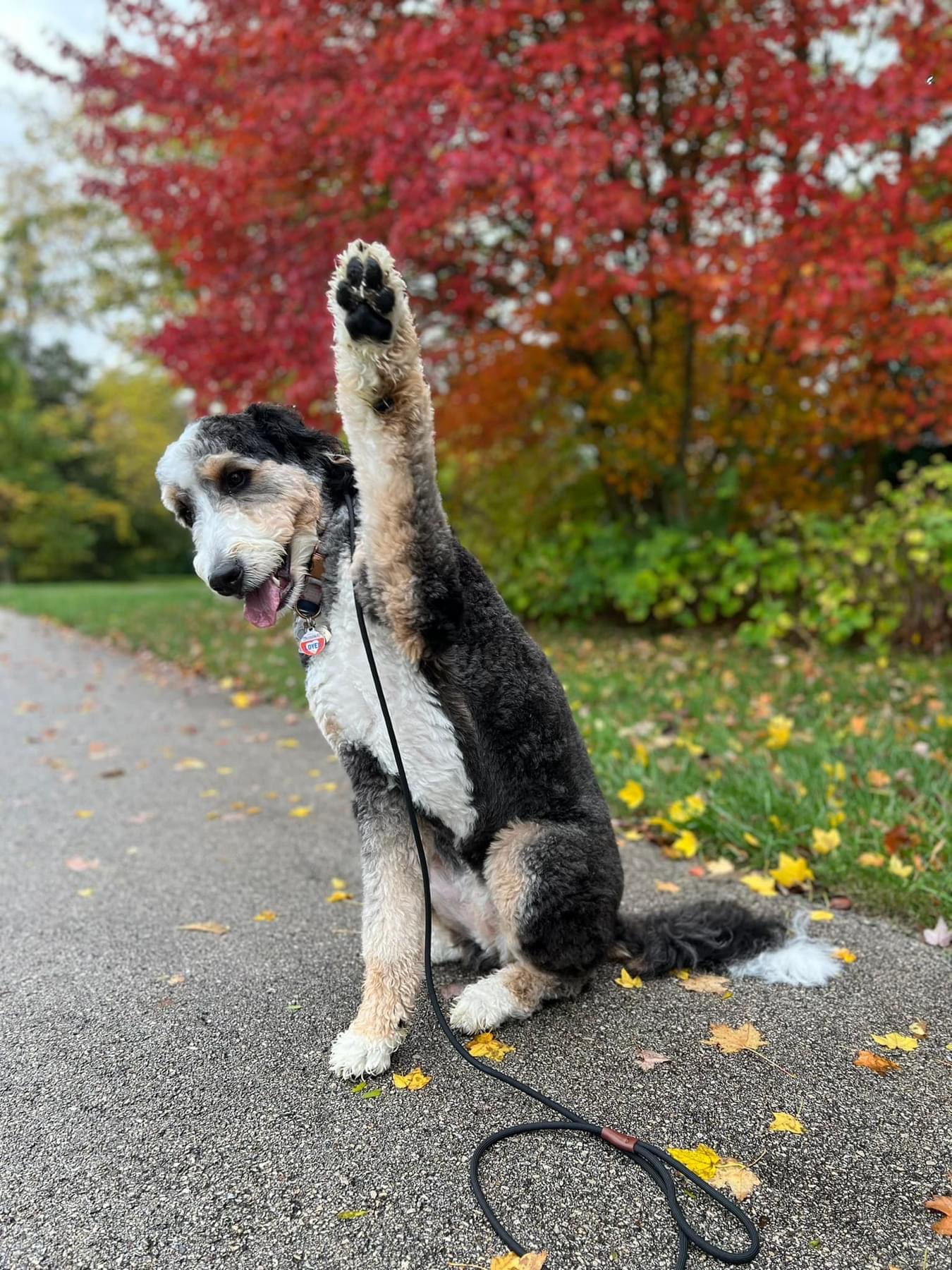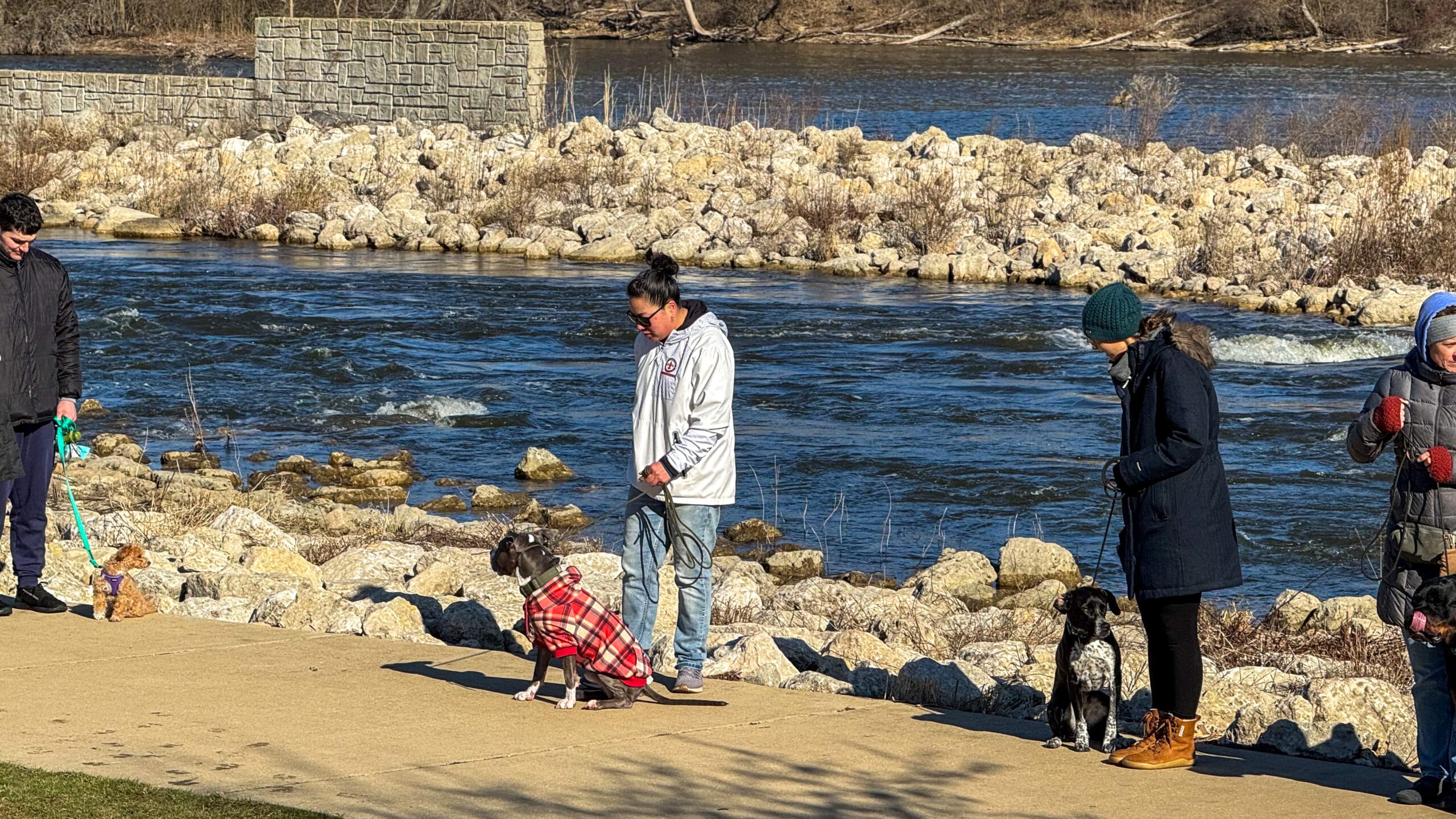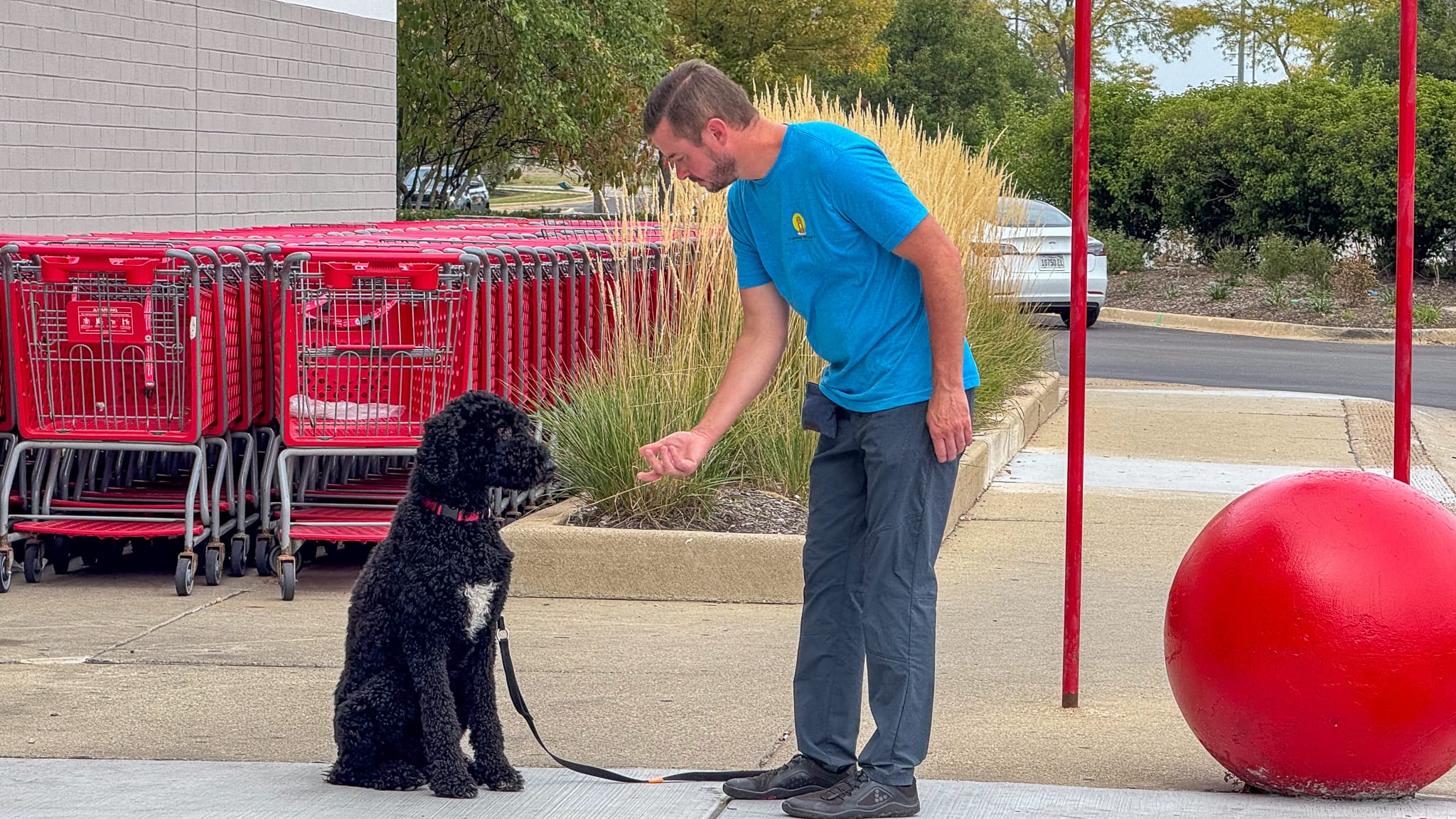Structured Dog Walks 101

A structured dog walk is more than just a casual stroll around the block. It’s a focused training session and bonding experience disguised as a walk in the park. Structured dog walks deliberately incorporate obedience training, socialization, or physical challenges into the regular walk. For example, you may utilize part of the walk to practice loose leash training.
You may set up an agility course at the park to provide mental and physical enrichment. These walks have designated purposes beyond exercise alone. For many dog owners, the daily walk is a routine as ingrained as morning coffee or brushing teeth. It’s a time to stretch our legs, get some fresh air, and, of course, relieve our dogs of pent-up energy. But is that all there is to it? Dog walking is more than just a routine activity to meet a dog’s physical exercise needs.
When approached with structure and purpose, dog walks become a powerful tool for training, mental stimulation, developing a bond with, and providing essential fulfillment. The significance of structured dog walks can positively impact your dog’s behavior and overall well-being.
What Are Structured Dog Walks?
Walks are the perfect training ground for basic commands like heel, sit, and stay. Use the distractions of the outside world to practice obedience in real-world settings, making your furry friend a more well-rounded pup. Just like us, dogs crave mental challenges. Sniffing new sights and sounds on walks keeps their minds engaged and prevents boredom, which boredom can lead to destructive behaviors. Spending quality time together, free from distractions, strengthens the connection between you and your dog. Chatting, playing fetch, or simply enjoying each other’s company fosters trust and understanding.
Train During Your Structured Walks
To successfully implement structured dog walks, some preparation is required. Your dog should already have basic leash manners trained, like not pulling, heeling, and paying attention to you. It’s important to identify places nearby that have the appropriate space, objects, hills, etc. to support the specific skills you want to train during the walk. Make sure to pace yourself by moving through the structured activities slowly, based on your dog’s current ability.
Keep training sessions short for puppies or inexperienced adult dogs to set them up for success. Be sure to stay positive throughout the process by using lots of encouragement and high-value treats to motivate your dog through new challenges. Mistakes should be learning opportunities rather than reasons for punishment.
Mental and Physical Fulfillment
Structured dog walks provide mental and physical stimulation that is crucial for a dog’s well-being. By maintaining a consistent pace and walking side by side with your dog, you create an environment that challenges their mind and body. This engagement helps prevent boredom, reduces anxiety, and promotes a healthier lifestyle. Additionally, structured walks allow dogs to release built-up energy, which can result in calmer behavior at home.
Structured Walks Are A Training Foundation
Structured walks serve as a foundation for training your dog. When your dog learns to walk calmly by your side without pulling or sniffing around, they develop impulse control and learn to focus on you as their leader. By establishing these fundamental skills during walks, you lay the groundwork for more advanced training exercises, such as obedience commands and off-leash reliability. Consistency and repetition are key to reinforcing desired behaviors.
Relationship Building
Walking side by side with your dog creates an opportunity for bonding and strengthening your relationship. Dogs are social animals and value the time spent with their owners. During structured walks, you have the chance to communicate with your dog, establish trust, and reinforce your position as the pack leader. By consistently engaging in structured walks, you create a routine that fosters a deeper connection.
Start Structure Early
It is essential to introduce structured walks at an early age. Puppies, like sponges, absorb information and experiences rapidly. By exposing them to structured walks from a young age, you help them develop proper leash manners and establish healthy habits. The earlier you start, the easier it will be to shape their behavior and ensure a smooth transition into more advanced training as they grow. This is building the foundation to a strong relationship.
Structured Dog Walks - Training That Lasts Last Thoughts
Structured dog walks are a vital component of a well-rounded training program. They provide mental and physical fulfillment, serve as a foundation for obedience training, and strengthen the bond between you and your dog. Remember to maintain a consistent pace, walk side by side, discourage pulling or sniffing, and start implementing structured walks at an early age. Embrace the opportunity to enhance your dog’s overall well-being and create a harmonious relationship built on trust, respect, and shared experiences.


Share Training That Lasts With Your Friends On Your Social Media
By sharing Training That Lasts, you’re not just promoting our dog training – you’re promoting happier homes, stronger friendships, and a richer understanding between humans and their canine companions. Help us Redefine Relationships one dog at a time!
Lets Work Together!
Our Consultation Assessment form is the perfect starting point for us to help you and your pet. We understand how difficult it can be to manage your dog’s behavior, especially if you’re away on vacation or busy with work. Our team of experienced trainers will evaluate your dog’s needs and develop an individualized training plan to get them back on the right track. With our assistance, you can rest assured that your pet will receive the best care possible.
Training That Lasts Services






